[COP Special 1] Power and Industry: The Kumejima Model’s Potential to Revitalize Islands
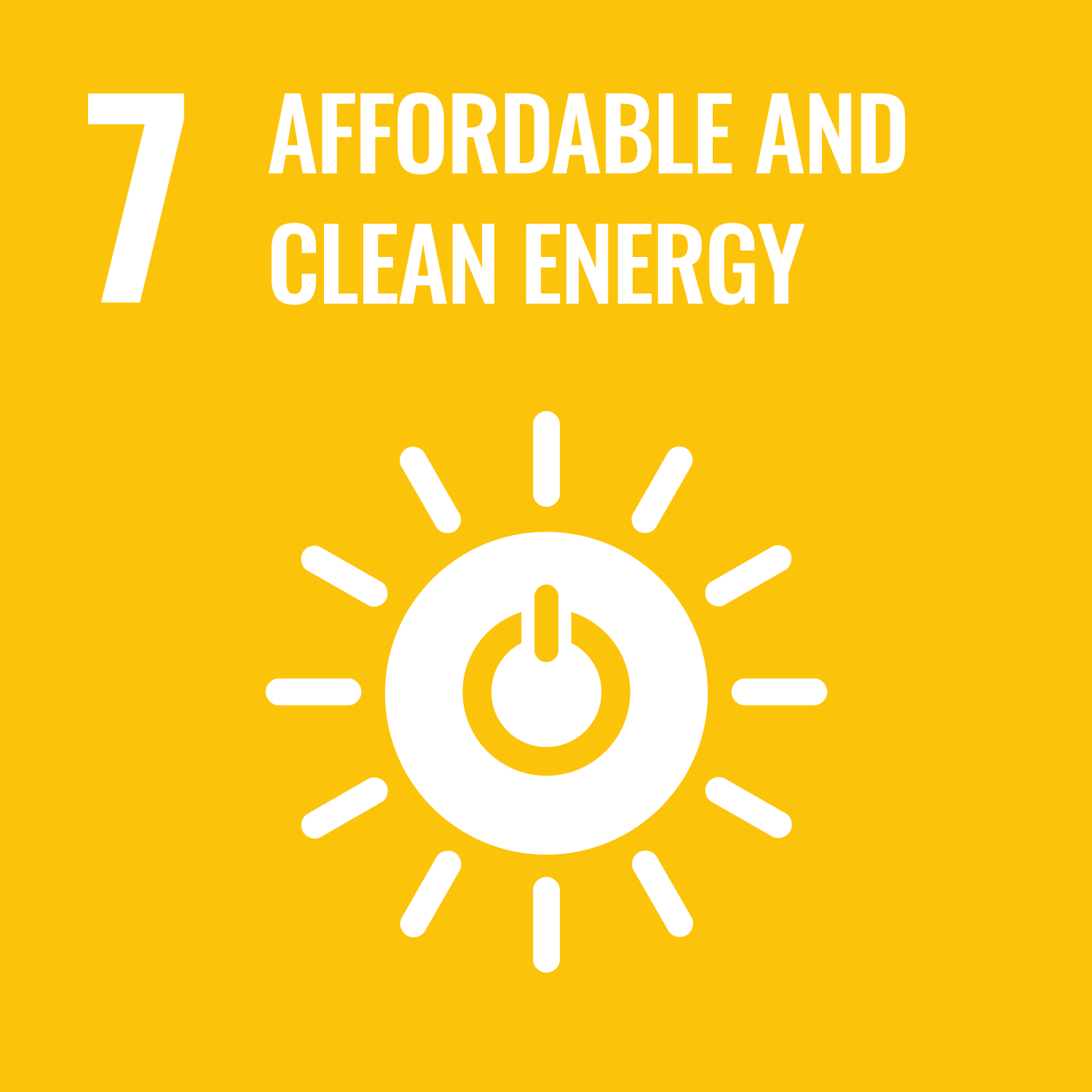
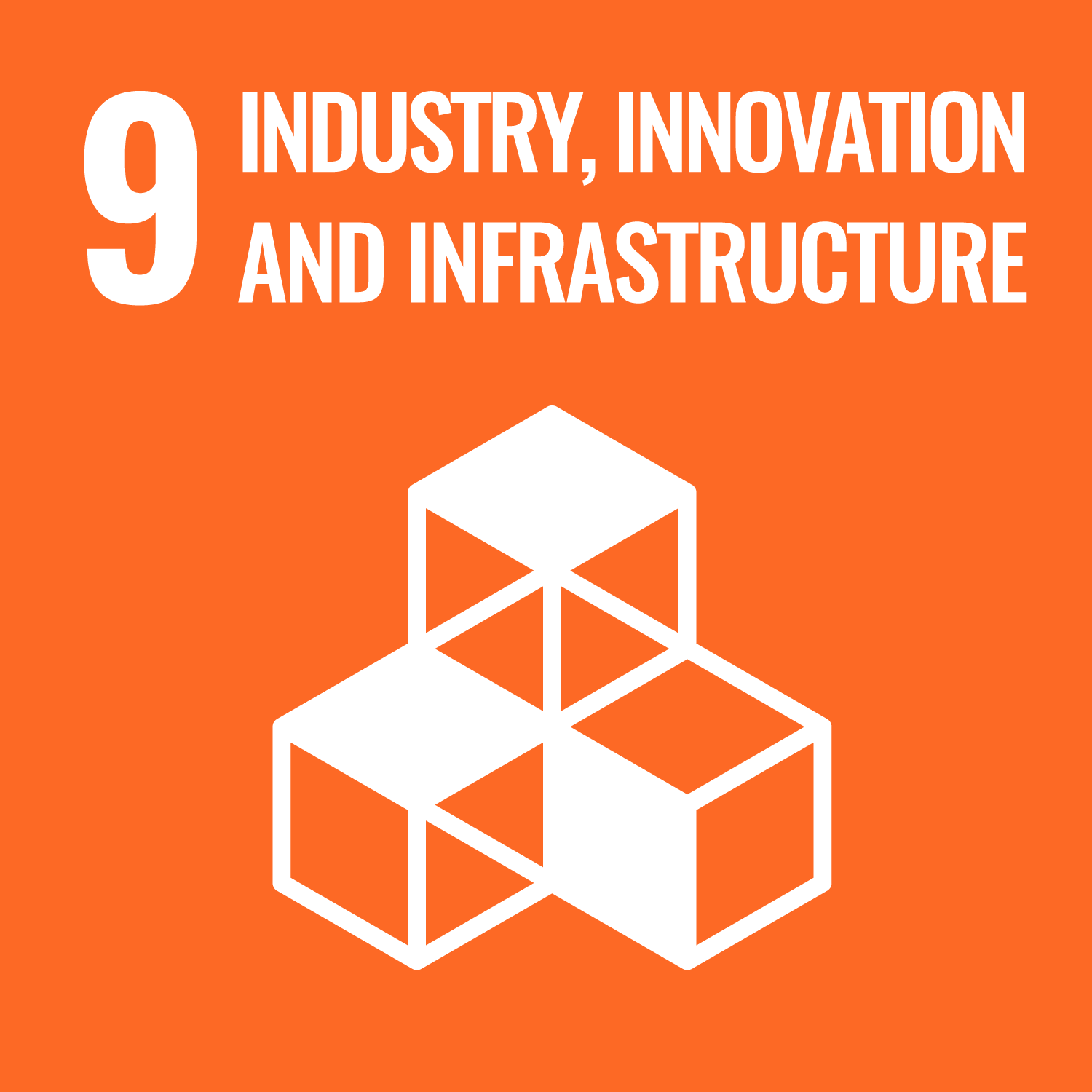
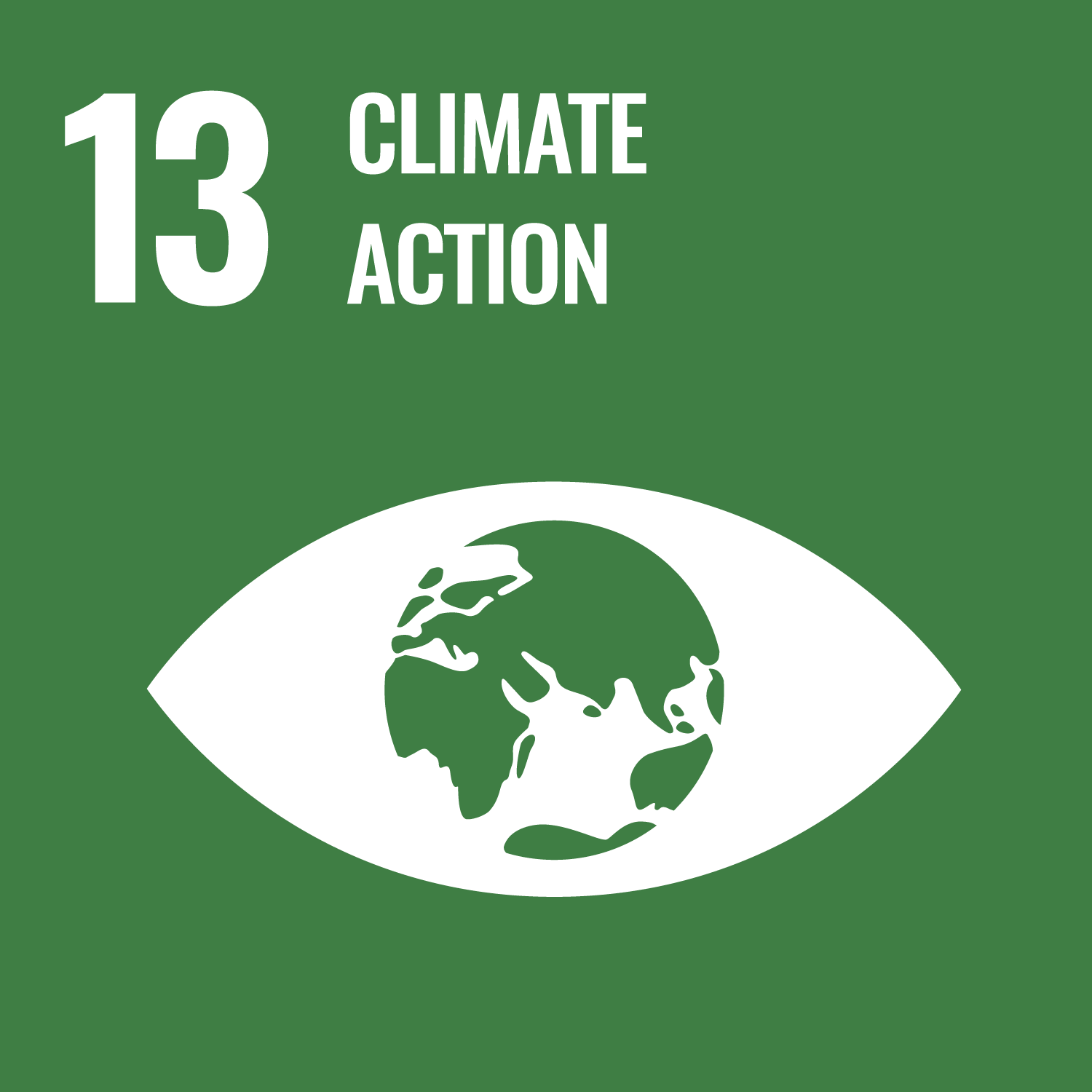
2023.11.28
COP28, the 28th Conference of the Parties to the United Nations Framework Convention on Climate Change, will take place from November 30 to December 12 in the United Arab Emirates. The convention will focus on urgent issues concerning the increasingly severe extreme weather that is occurring on a global scale. On the occasion of this conference, we are publishing a two-part series that focuses on JICA’s cooperation on climate action. This first article is about an Ocean Thermal Energy Conversion (OTEC) demonstration project that is being conducted on the island of Kumejima in Okinawa. It introduces the Kumejima Model, which also promotes the development of industry by combining the uses of deep seawater. JICA is exploring the introduction of this model—which aims to balance sustainable clean energy with industrial development—to other island nations.
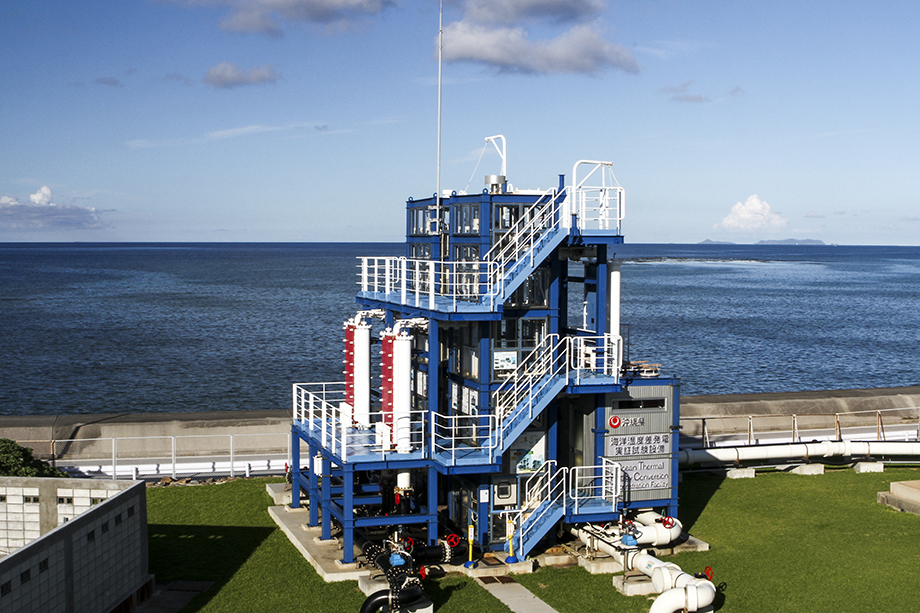
The Okinawa OTEC demonstration plant (100 kW) on Kumejima Island, Okinawa.
Global warming is one of the main causes of extreme weather. The world's primary sources of energy are fossil fuels like oil, coal, and natural gas, which emit carbon dioxide, a major contributor to global warming. To achieve the goal of decarbonization, it is necessary for the world to make the transition to other energy sources. Island nations, in particular, rely heavily on imported fossil fuels, mainly diesel, for their energy needs. Though transportation costs were already high, the spread of COVID-19 and Russia's invasion of Ukraine have further escalated fuel prices, leading to an increase in the cost of energy and other commodities. Economic circumstances are thus necessitating a transition to other energy sources, and island nations are striving to transition to 100-percent renewable energy through the use of solar and wind power. The challenge with variable renewable energy sources, however, is that the amount of electricity produced can vary depending on the weather and the season. This lack of stability in supply requires solutions such as energy storage systems and backup power sources, and these can drive up the overall cost of electricity generation.
Against such a backdrop, OTEC has been gaining significant interest as a clean, stable source of renewable energy.
OTEC utilizes the temperature difference between warm surface water and cold deep seawater to generate vapor, using substances such as low-boiling-point ammonia as a medium. This vapor is used to rotate turbines and generate electricity. OTEC can provide a steady supply of power 24 hours a day and is less affected by weather conditions than variable renewable energy sources such as solar and wind power. The most suitable regions for OTEC are typically found near the equator, which have temperature differences of around 20°C between the surface water and deep seawater (depths of 600–100 meters). This makes the technology particularly relevant as an energy source for island nations in that area.
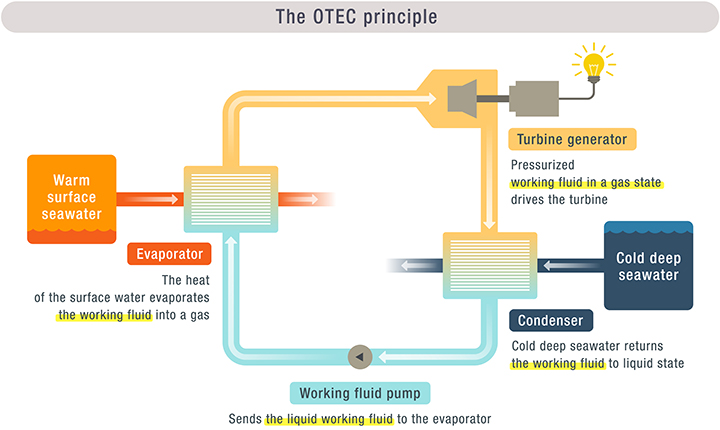
Source: Okinawa Ocean Thermal Energy Conversion Demonstration Facility.
Since 2013, Okinawa Prefecture has been conducting an OTEC demonstration project on an island in the town of Kumejima, about 100 kilometers west of Okinawa’s main island. At the time that the project was conceived, Okinawa Prefecture had an energy self-sufficiency rate of around 0.5 percent (very low compared to Japan’s national average of 4.8 percent) and was heavily dependent on fossil fuels. In an effort to diversify energy sources and increase self-sufficiency, Kumejima was chosen for the OTEC project because it had facilities for extracting deep sea water. Around the island, the temperature difference between the surface seawater and the deep seawater was also suitable for OTEC, at around 20°C.
The Kumejima Model demonstration—a collaboration between Saga University (which has been researching OTEC for over 50 years), the town of Kumejima, and private companies hoping to utilize deep sea water in various industries—is now in its 11th year. It is the world's first successful case of long-term electricity generation using actual seawater, and has been attracting significant interest for its demonstration of both successful power generation and the utilization of deep seawater for industrial purposes. The town of Kumejima has welcomed visitors from 69 countries (as of October 31, 2023) around the world who have come to observe the project.
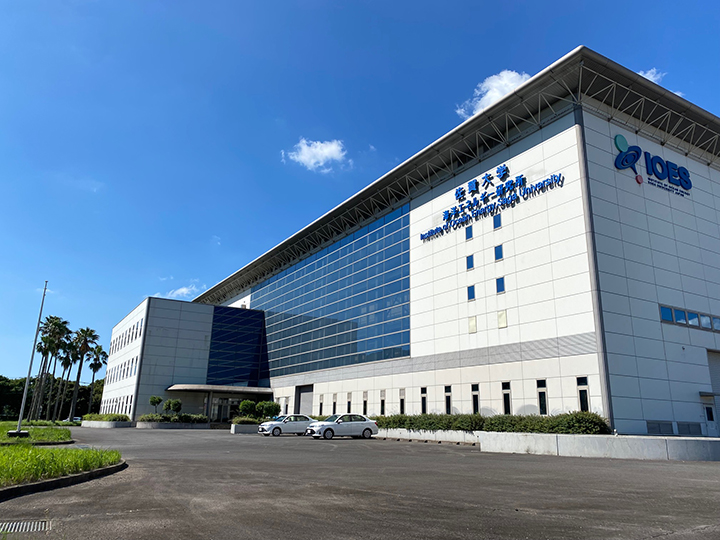
Imari Satellite, Institute of Ocean Energy (IOES), Saga University.
OTEC has a significant advantage because deep seawater used for power generation can be utilized after its use in energy production by a variety of business sectors. Deep seawater maintains a consistently low temperature throughout the year, has low bacterial content, and is rich in nutrients and mineral components. Even after the water’s use in power generation, its quality remains unchanged, making it suitable for the aquaculture of marine products such as prawns, sea grapes, and oysters, or for producing drinking water and cosmetics.
"Businesses using Kumejima's deep sea water currently turn over approximately 2.5 billion yen on an annual basis,” says Esu Seichiro of the Kumejima Town Project Development Office. “In fiscal 2022, the cosmetics industry accounted for approximately one billion yen in sales. Although the population of Kumejima is about 7,000, the deep seawater industry has created about 140 jobs, demonstrating a significant economic and employment-related impact."
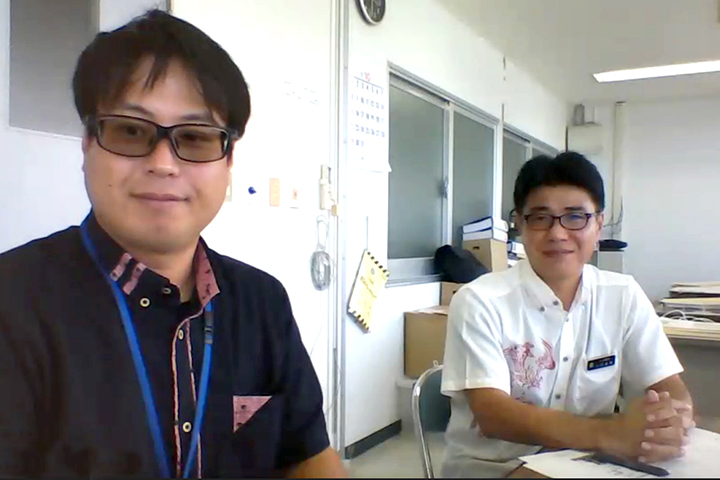
Esu Seichiro (left) and Director Ota Naoki of the Kumejima Town Project Development Office.
Coral seedlings being placed on the seafloor. A local research institute is developing technology to produce coral seedlings using deep seawater.
The Kumejima Model, which generates both electricity and industries is seen by JICA as a potential solution to the challenges of clean energy and water supply, as well as contributing to the industrial growth of developing island nations. Field surveys to introduce this model to other island nations have already begun. The first field survey for a Pacific Island nation was launched in May 2023, in the Republic of Palau, with information gathering and confirmation activities to continue over 18 months.
Palau, like many other island nations, is heavily reliant on diesel power generation and is exploring the transition to clean and affordable energy sources. There are also problems with the lack of significant industries beyond tourism and its dependence on rainwater for its water supply (which can lead to water shortages during typhoons and natural disasters).
OTEC could not only contribute to the provision of a stable power source, but also help create industries that utilize deep seawater. The availability of fresh seafood and leafy vegetables at hotels and restaurants could increase Palau’s value as a tourist destination, attracting more visitors. What is more, efficient desalination during drought events could provide affordable drinking water, contributing to national security.
Many island nations face the common challenge of young people leaving to further their higher education but never returning home. If deep seawater is to be used effectively, specialized professionals in technology and international marketing will be needed in fields such as aquaculture, agriculture, and life sciences. Combining the uses of deep seawater holds great potential in providing young people with opportunities for employment and contributing to the revitalization of the island’s economy and society.
Many island nations in Oceania are working hard towards carbon neutrality and nature conservation. Some of these nations have a strong trust in the Japanese people, despite being the site of battles during World War II. These nations are also strategically positioned along important sea routes for Japan. Field surveys are now underway with the aim of promoting the Kumejima Model in these island nations, following the focus on Palau.
To further introduce the Kumejima Model among island nations, it is essential to establish a collaborative system involving government, industry, and academia, as well as businesses. During the field survey conducted in May, explanatory meetings on the Kumejima Model were conducted for local government agencies and public utilities to deepen the understanding of local stakeholders.
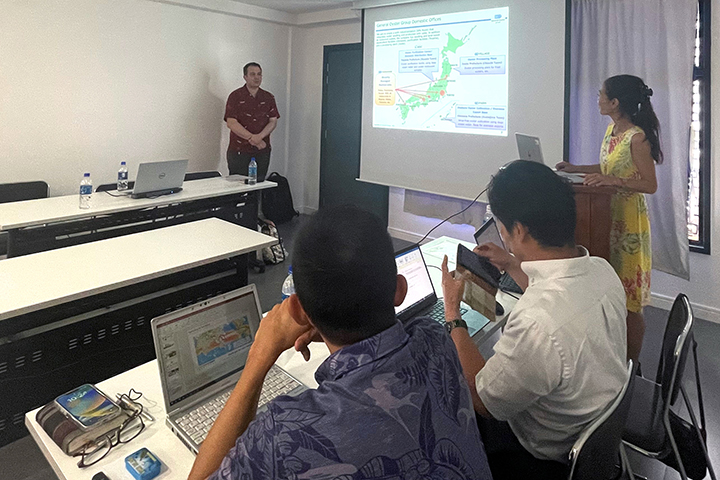
Briefing session held in Palau for local government agencies and public business operators.
GO Farm Inc., which took part in the first field survey as a representative of the private sector, has fully implemented land-based oyster farming on Kumejima using deep seawater, achieving its goal of producing completely safe oysters. It is considering expanding this land-based aquaculture system overseas, believing that it has potential in other island nations. Washiashi Kyoko, the company’s COO, says, "I feel that the Kumejima Model, which permits land-based aquaculture using deep seawater, will become a significant global model in the future, as the ocean environment dramatically changes due to rising temperatures. We hope to share our expertise with Palau at a speed that only a private company could achieve."
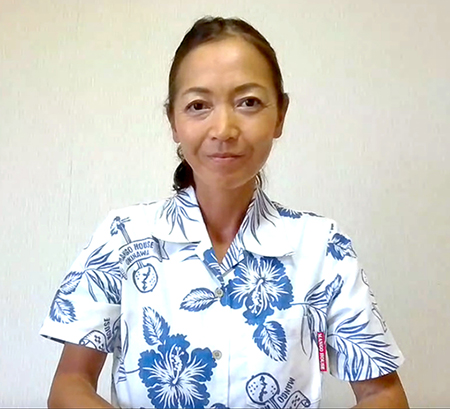
Washiashi Kyoko, COO of GO Farm Inc.
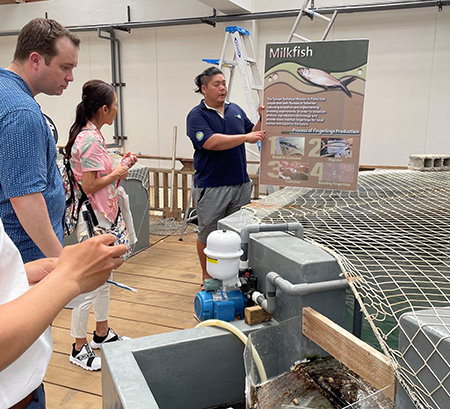
Washiashi and the research team on a tour of an aquaculture facility in Palau.
Studies in Palau are underway to select a potential site for the power plant, and to develop proposals and an economic analysis of a business model that utilizes deep seawater. If it is judged to be feasible, the next step is to collaborate with other countries' aid agencies and international organizations to work toward implementing the Kumejima Model.
JICA is also considering rolling out this Kumejima Model to other island nations, including the Solomon Islands, where site suitability assessments have been planned. There is growing interest in this project, with inquiries about visits to Kumejima received from UN representatives and other island nations. Many have expressed the desire to implement a similar project.
"OTEC is one of the few renewable energy technologies in which Japan leads the world. I hope that the Kumejima Model will serve as a Japanese model that benefits island regions," says Ikegami Yasuyuki, Professor at the Institute of Ocean Energy (IOES), Saga University, who is leading the research on this technology.
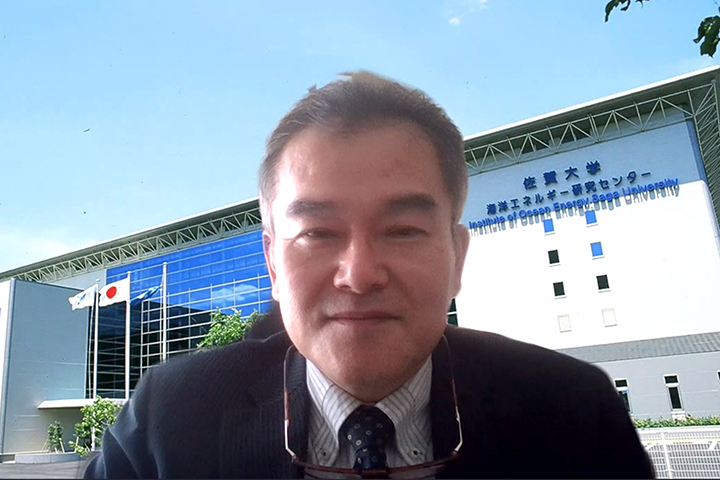
Professor Ikegami Yasuyuki of the Institute of Ocean Energy (IOES), Saga University is a global leader in this technology. He is following in the footsteps of the late Professor Uehara Haruo of Saga University, who invented the Uehara cycle system for the efficient application of OTEC.
Kumejima has a goal of achieving energy self-sufficiency by 2040, using renewable energy for all of the island’s energy consumption. Its “Energy Vision” sees solar power as the main power source, along with 24-hour baseload power generation using OTEC technology. The electricity currently generated under the demonstration project is used to operate the facility, but progress is being made towards commercializing power generation. In 2022, Mitsui O.S.K. Lines,Ltd. signed up as the operating partner for the demonstration plant. It has plans to expand the existing 100 kW power generation plant to a 1 MW plant by 2026.
"The Kumejima Model aims for a sustainable island model that produces electricity, water, and food by utilizing the local resource of deep seawater,” says Director Ota Naoki of the Kumejima Town Project Development Office. "We intend to make the project a success at the commercial stage here on Kumejima, and we also hope that it expands overseas."
In 2015, Japan announced support for using its expertise and technology in renewable energy to benefit island countries who are vulnerable to environmental damage from climate change. This led to the Hybrid Islands Initiative, a project promoted by JICA. The program aims to introduce renewable energy alongside other energy sources, such as diesel, that are currently being used by many island nations. With the introduction of the Kumejima Model and other initiatives, JICA continues to engage in collaborative efforts to address the global issues faced by island nations.
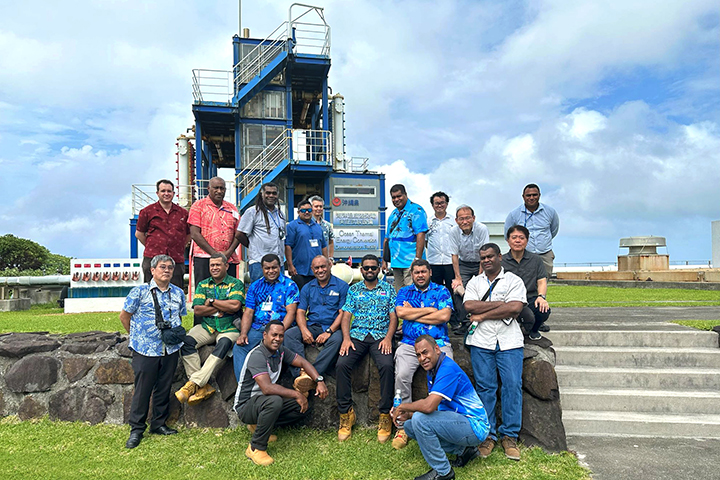
In June this year, engineers from the Republic of Fiji toured the demonstration plant on Kumejima.
scroll